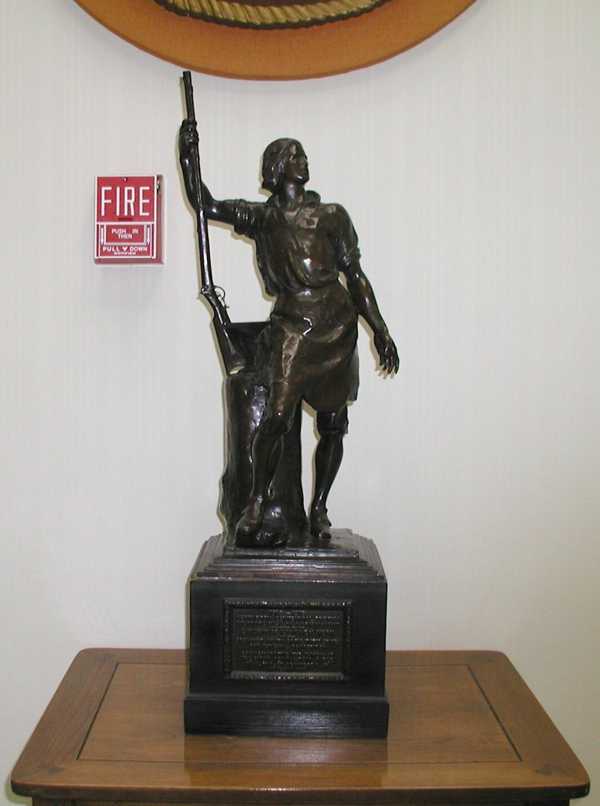On a daily basis hundreds of Kentucky Guard personnel and visitors to the Headquarters of the Kentucky National Guard pass by this beautiful trophy without giving it the first thought. Many likely assume it is a minuteman statute. Located on the landing of the main staircase in the Emergency Operations Center (EOC) building, the trophy has stood a lonely vigil since the building was first opened in 1974, prior to that it was located in the Office of the Adjutant General in the State Capitol.
History of the Remington Trophy
In 1916, the Remington Arms Company celebrated its 100th year in business, a major milestone for the gun maker. In the city of Ilion, New York, home of the company, a grand celebration was held lasting three days, from 29-31 August, featuring a poster contest, speeches by numerous dignitaries, a monument dedication, band music and a parade. Thousands of visitors crowded into the small village to enjoy the celebration.
To honor the achievement of 100 years in business The Centennial Commission of the Village of Ilion commissioned the noted sculptor, Albin Polasek (1), to produce a statue of the company's founder, Eliphalet Remington II (2). From the clay original were produced bronze statues, and one was sent to the Adjutant General of each state "from the Village of Ilion."
The letter, which accompanied each 40-pound statue, stated that its purpose was to encourage an interest in rifle practice and marksmanship by the "organized militia" of each state. The details were left up to each state. The plaque on each statue states: "Presented by Citizens of Ilion, New York to Organized Military of the U. S. for Perpetual Competition." The donors suggested that each statue be awarded annually to the state military organization represented by the winning rifle team in a special match to be known as "The Remington Centennial Trophy Match."
A check of various correspondences to and from the Kentucky Adjutant General's Office does not indicate that the trophy was ever used or presented to any unit or individual.
Images of Remington Trophy
The plaque on the trophy base:
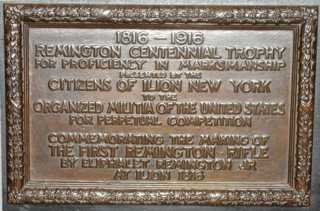
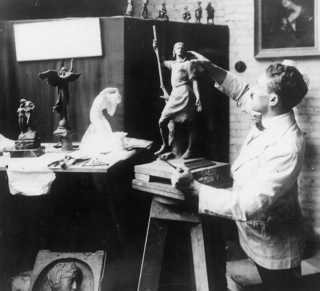
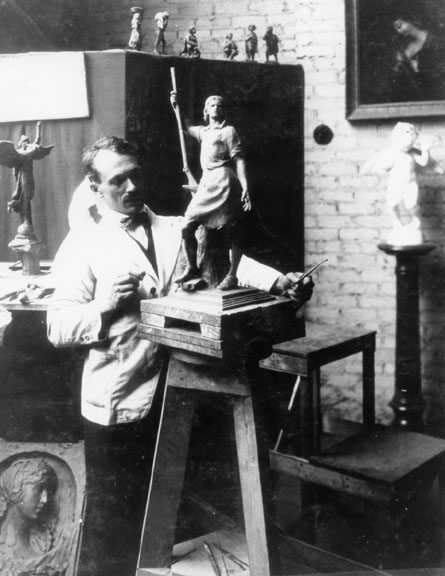
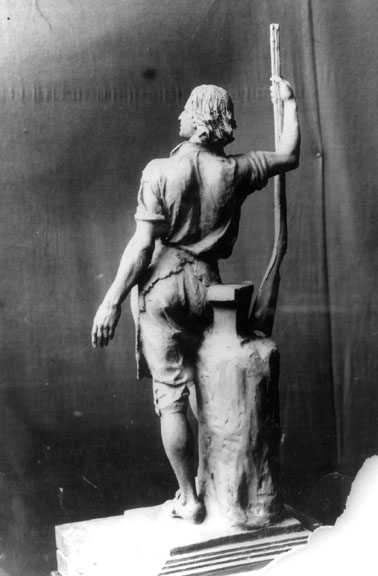
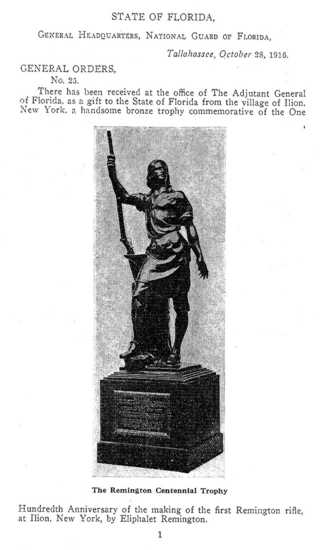
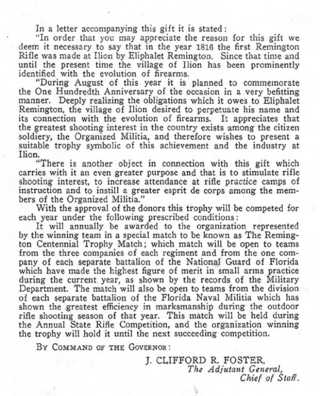
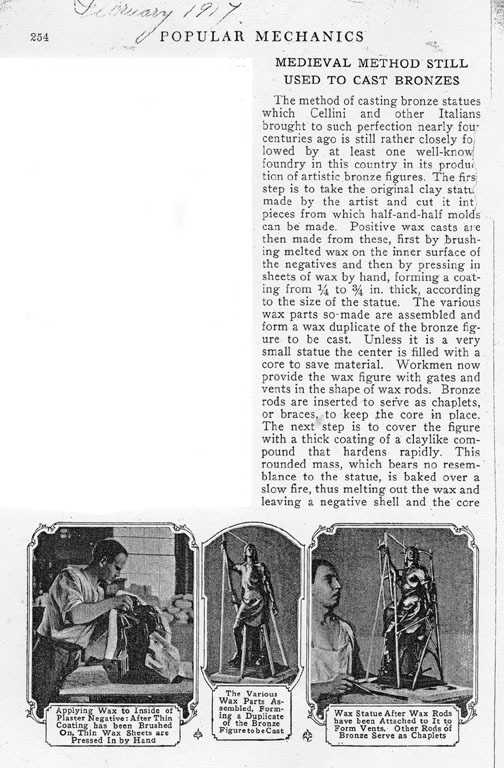
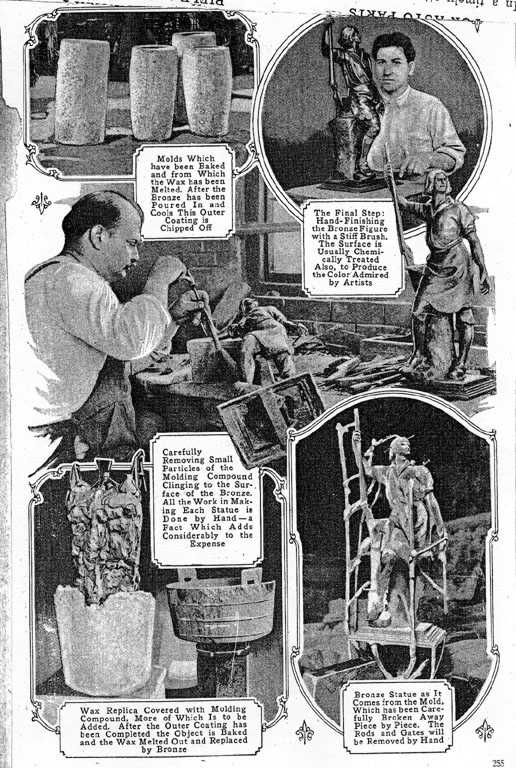

Notes & References
Special thanks to Roy Marcot, of the Remington Arms Museum and the Remington Society for information and photographs provided for this article.
(1) Albin Polasek, Czech-American sculptor was born at Frenstat in Moravia, the Czech-Republic in 1879. He came to the U.S. in 1901, making his trade as a wood craver. In 1906 he studied at the Pennsylvania Academy of Fine Arts, winning the Cresson Traveling Scholarship in 1907, 1908, and 1909. Polasek was a Fellow at the American Academy in Rome from 1910 to 1913, subsequent to his studies in Italy and Greece; he started his own studio in New York City. In 1916 he went to Chicago, where he was head of the Department of Sculpture at the Art Institute until 1943. In 1949, he purchased property on Lake Osceola in Winter Park, Florida and built his retirement home and studio. He continued to create his art until his death at the age of 86 on May 19, 1965. Today, the Albin Polasek Foundation operates his residence and studio in Winter Park, as the Albin Polasek Museum and Sculpture Gardens.
(2) Eliphalet Remington II, inventor, gunsmith, and arms manufacturer was born in Suffield, Connecticut, born in 1793. Remington was trained as a blacksmith, but turned to gunsmithing at an early age. With his father, he founded a smithy in upstate New York originally manufacturing farm tools. In 1816, Remington introduced a highly accurate rifle, the demand for which changed the focus of the business to firearms production. Upon his father’s death in 1828, Eliphalet took control of the business and established a rifle factory at Ilion, New York. Government contracts for guns to fight the Mexican War fueled the expansion of the company, which soon included his three sons. The company introduced a line of agricultural tools in 1856, but demand for firearms surged again with the start of the Civil War. On August 12, 1861, Eliphalet Remington died, upon his death his son Philo took over the firm.
